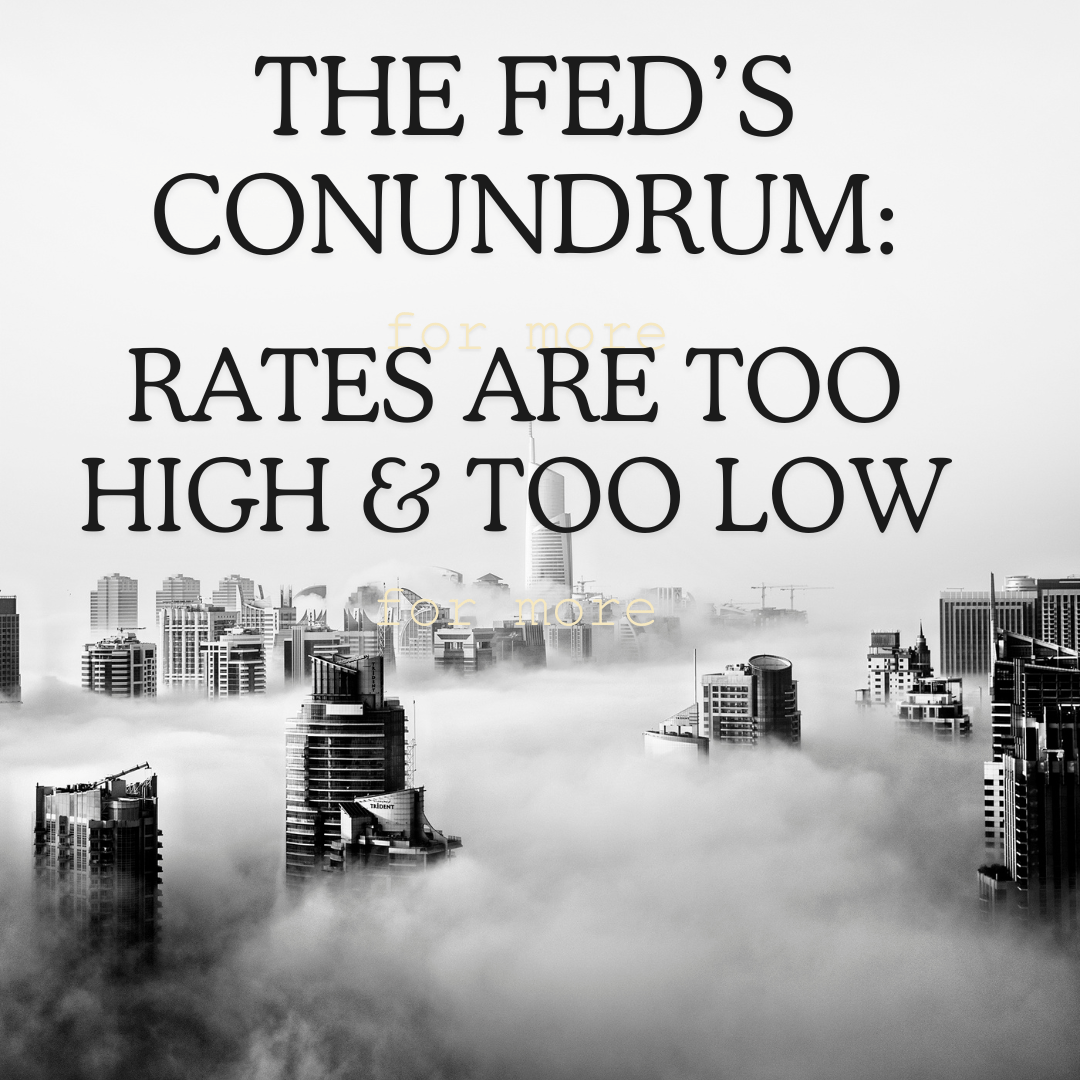
The Fed’s Conundrum: Rates are Too High & Too Low
Interest Rates: Navigating the Paradox of Highs and Lows
In the intricate dance of economics, interest rates wield an unparalleled influence, shaping the behavior of businesses, investors, and consumers alike. Yet, in a world where volatility reigns supreme, the prevailing sentiment often oscillates between two extremes: rates that are deemed either too high or too low. As businesses navigate this conundrum, understanding the nuances of this paradox becomes paramount for sustainable growth and success.
The Highs: A Struggle for Affordability
For many businesses, high interest rates represent a formidable barrier to growth and expansion. Elevated borrowing costs can stifle investment initiatives, constraining capital expenditure and hindering innovation. Small and medium enterprises (SMEs), in particular, find themselves disproportionately impacted, as they grapple with the burden of servicing debt amidst soaring interest rates.
Moreover, consumers, burdened by higher borrowing costs, exhibit a reluctance to spend, dampening demand and impeding revenue streams for businesses across various sectors. From retail to real estate, the ripple effects of exorbitant interest rates reverberate throughout the economy, creating a challenging environment characterized by sluggish growth and diminished profitability.
The Lows: A Double-Edged Sword
Conversely, the era of historically low interest rates presents a different set of challenges for businesses. While ostensibly favorable for borrowers, the prolonged period of low rates engenders a sense of complacency, fostering a culture of excessive leverage and speculative behavior. In such an environment, the allure of cheap credit often leads to imprudent decision-making, as businesses eschew prudence in favor of short-term gains.
Furthermore, low interest rates engender asset price inflation, fueling bubbles in equity markets and real estate sectors. This inflationary pressure distorts market fundamentals, creating an environment fraught with volatility and heightened risk. As businesses grapple with the consequences of irrational exuberance, the specter of a looming correction looms ominously on the horizon.
Navigating the Middle Ground: A Strategy for Resilience
In the face of this dichotomy, businesses must adopt a nuanced approach to managing interest rate risk, eschewing binary thinking in favor of adaptability and resilience. Rather than viewing high and low rates as insurmountable obstacles, astute businesses recognize the opportunities inherent in both extremes.
During periods of high interest rates, prudent financial management becomes imperative, with a focus on deleveraging, optimizing capital structures, and implementing cost-saving measures. By fortifying balance sheets and shoring up liquidity buffers, businesses can weather the storm of elevated borrowing costs, positioning themselves for growth once conditions improve.
Conversely, in a low-rate environment, businesses must exercise caution, guarding against the pitfalls of excessive leverage and speculative fervor. By embracing a long-term perspective and prioritizing sustainable growth over short-term gains, businesses can mitigate the risks associated with asset price inflation and market volatility, positioning themselves for long-term success.
Conclusion: Embracing Adaptability in a World of Flux
In the ever-changing landscape of global finance, interest rates serve as both a barometer of economic health and a catalyst for transformation. By acknowledging the duality of high and low rates, businesses can chart a course towards resilience and prosperity, leveraging the opportunities inherent in each extreme. Through prudent financial management, strategic foresight, and a commitment to adaptability, businesses can navigate the conundrum of interest rates with confidence, emerging stronger and more resilient in the face of uncertainty.
To learn more, contact: Chris Lehnes | 203-664-1535 | clehnes@chrislehnes.com
